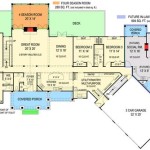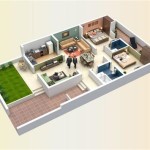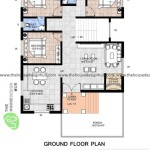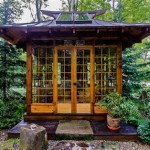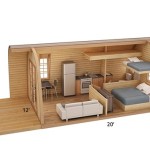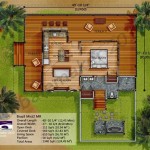Kerala Contemporary Style House Plans: A Comprehensive Guide
Kerala contemporary style house plans represent a fusion of traditional Kerala architecture and modern design principles. This architectural style aims to create homes that are aesthetically pleasing, functional, and well-suited to the tropical climate of Kerala. It emphasizes open spaces, natural light, ventilation, and the use of locally sourced materials, while incorporating modern amenities and technological advancements. This article provides a detailed examination of the key features, considerations, and benefits associated with Kerala contemporary style house plans.
The architectural heritage of Kerala is deeply rooted in its unique climate, topography, and cultural traditions. Traditional Kerala homes, often referred to as “Nalukettu,” are characterized by their sloping tiled roofs, courtyards, wooden construction, and use of natural materials. Contemporary Kerala house designs draw inspiration from these traditional elements but adapt them to suit modern lifestyles and preferences. The result is a harmonious blend of the old and the new, creating homes that are both timeless and relevant.
Contemporary house plans in Kerala place a strong emphasis on sustainability and environmental consciousness. The designs often incorporate eco-friendly materials, energy-efficient systems, and rainwater harvesting techniques to minimize the environmental impact of the construction and operation of the house. Passive cooling strategies, such as natural ventilation and shading, are also commonly employed to reduce the reliance on air conditioning, leading to lower energy consumption and a more comfortable living environment.
Key Features of Kerala Contemporary Style House Plans
Several distinguishing features characterize Kerala contemporary style house plans, setting them apart from other architectural styles. These features contribute to the unique aesthetic appeal, functionality, and environmental performance of these homes.
Sloping Roofs: One of the most recognizable features of Kerala architecture is the sloping roof, typically covered with clay tiles. This design element effectively sheds rainwater and provides shade from the intense tropical sun. In contemporary designs, the sloping roof is often incorporated with modern materials and construction techniques, such as concrete or steel framing, to enhance its structural integrity and durability. The pitch of the roof may also be adjusted to optimize rainwater harvesting and solar panel placement.
Open Planning: Traditional Kerala homes often featured interconnected spaces with limited partitioning. Contemporary designs take this concept further by emphasizing open floor plans that promote a sense of spaciousness and facilitate natural light penetration. Living, dining, and kitchen areas are often integrated into a single, large space, creating a flexible and versatile living environment. This open planning also encourages social interaction and enhances the flow of air throughout the house.
Courtyards and Landscaping: Courtyards, known as “Nadumuttam” in traditional Kerala homes, are central elements that bring natural light and ventilation into the interior spaces. Contemporary designs often incorporate courtyards or landscaped areas to create a seamless connection between the indoors and outdoors. These courtyards can serve as tranquil retreats, providing a space for relaxation and contemplation. The use of native plants and trees in the landscaping further enhances the ecological value of the property and promotes biodiversity.
Use of Natural Materials: Kerala contemporary style houses typically incorporate a variety of natural materials, such as wood, stone, and clay, to create a warm and inviting atmosphere. Teak wood, known for its durability and resistance to decay, is a popular choice for doors, windows, and furniture. Laterite stone, a locally available building material, is often used for walls and foundations, providing excellent thermal insulation. Clay tiles, as mentioned earlier, are commonly used for roofing, adding to the aesthetic appeal and functionality of the design.
Large Windows and Ventilation: Maximizing natural light and ventilation is a key consideration in Kerala contemporary house plans. Large windows, strategically placed to capture prevailing breezes, are used to promote cross-ventilation and reduce the need for artificial lighting. Jalousie windows, with adjustable slats, are particularly effective in controlling airflow and providing privacy. Skylights and clerestory windows can also be incorporated to bring natural light into the interior spaces, even in areas that are not directly exposed to sunlight.
Considerations for Planning a Kerala Contemporary Style House
Planning a Kerala contemporary style house requires careful consideration of various factors, including site conditions, budget constraints, and personal preferences. Taking these factors into account will help ensure that the final design is functional, aesthetically pleasing, and sustainable.
Site Analysis: A thorough site analysis is essential to understand the topography, soil conditions, climate, and orientation of the plot. This analysis will inform the design decisions related to the placement of the house, the selection of materials, and the implementation of passive cooling strategies. For example, the orientation of the house can be optimized to minimize solar heat gain in the summer and maximize natural light in the winter. The soil conditions will determine the type of foundation required, and the topography will influence the design of the landscape.
Budget Planning: The cost of constructing a Kerala contemporary style house can vary depending on the size of the house, the materials used, and the complexity of the design. It is important to establish a realistic budget and prioritize the essential features and amenities. Value engineering, which involves identifying cost-effective alternatives without compromising quality, can be employed to optimize the use of resources. Engaging with experienced architects and contractors who have a proven track record in Kerala contemporary style construction is crucial for accurate cost estimation and efficient project management.
Material Selection: The selection of materials plays a significant role in the aesthetic appeal, durability, and environmental performance of the house. Choosing locally sourced materials, such as laterite stone and teak wood, can reduce transportation costs and support local industries. Sustainable building materials, such as recycled concrete and bamboo, can further minimize the environmental impact of the construction. It is also important to consider the long-term maintenance requirements of the materials and select options that are durable and easy to maintain.
Climate Responsiveness: Kerala's tropical climate, characterized by high humidity and heavy rainfall, requires careful consideration of climate-responsive design principles. Designing for natural ventilation, shading, and rainwater harvesting can significantly reduce the energy consumption and water usage of the house. Overhangs, balconies, and verandas can provide shade from the sun and protect windows from rain. Rainwater harvesting systems can collect rainwater for non-potable uses, such as irrigation and toilet flushing.
Incorporating Modern Amenities: While Kerala contemporary style houses draw inspiration from traditional architecture, they also incorporate modern amenities and technological advancements to enhance comfort and convenience. Smart home technologies, such as automated lighting, climate control, and security systems, can be integrated into the design. Energy-efficient appliances, such as solar water heaters and LED lighting, can further reduce the energy consumption of the house. The layout of the house should also be designed to accommodate the needs of modern lifestyles, with features such as home offices, entertainment rooms, and fitness areas.
Benefits of Kerala Contemporary Style House Plans
Choosing a Kerala contemporary style house plan offers numerous benefits, ranging from aesthetic appeal and functionality to environmental sustainability and cultural relevance.
Aesthetic Appeal: The harmonious blend of traditional and modern design elements creates a visually appealing and timeless aesthetic. The sloping roofs, courtyards, and use of natural materials contribute to a warm and inviting atmosphere. The clean lines and open spaces of contemporary design add a touch of sophistication and elegance. The overall effect is a home that is both beautiful and functional, reflecting the unique cultural heritage of Kerala.
Climate Adaptability: Kerala contemporary style houses are designed to be inherently climate-responsive, minimizing the need for artificial heating, cooling, and lighting. The sloping roofs provide shade and shed rainwater, while the large windows and courtyards promote natural ventilation. The use of locally sourced materials, such as laterite stone and teak wood, provides excellent thermal insulation. These features contribute to a comfortable and energy-efficient living environment, reducing the reliance on fossil fuels and lowering utility bills.
Sustainability: Sustainable design principles are integral to Kerala contemporary style house plans. The use of eco-friendly materials, energy-efficient systems, and rainwater harvesting techniques minimizes the environmental impact of the construction and operation of the house. Passive cooling strategies, such as natural ventilation and shading, reduce the reliance on air conditioning. The incorporation of native plants and trees in the landscaping enhances the ecological value of the property and promotes biodiversity. These sustainable features contribute to a healthier and more environmentally responsible lifestyle.
Cultural Relevance: Kerala contemporary style houses pay homage to the rich architectural heritage of the region while adapting to the needs and preferences of modern lifestyles. The designs incorporate traditional elements, such as sloping roofs and courtyards, but reinterpret them in a contemporary context. This fusion of old and new creates homes that are both culturally relevant and aesthetically pleasing, reflecting the unique identity of Kerala.
Increased Property Value: Kerala contemporary style houses are highly sought after due to their aesthetic appeal, functionality, and sustainability. These features contribute to increased property value and make them a desirable investment. The climate-responsive design and energy-efficient systems also translate into lower operating costs, further enhancing the long-term value of the property. A well-designed and constructed Kerala contemporary style house is an asset that will appreciate over time, providing both financial and personal benefits.

Excellent Contemporary Kerala Home Design 2631 Sq Ft House Houses Bungalow

Contemporary House Design Kerala Model Home Plans

4 Bedroom Modern Contemporary Kerala House Design With Free Plan Home Planners

Beautiful Contemporary Style Residence 32 Lakhs Kerala House Design Duplex Bungalow

Kerala Contemporary House Design In T Cost

Best Kerala House Designs Floor Design Plans And Ideas

Contemporary Style Elevation Kerala Model Home Plans

Contemporary Modern Style Kerala House Design At 3600 Sqft

2352 Sq Ft Awesome Contemporary Kerala Home Design House Small Architecture

Kerala Style House Plans Low Cost Small In With Photo

